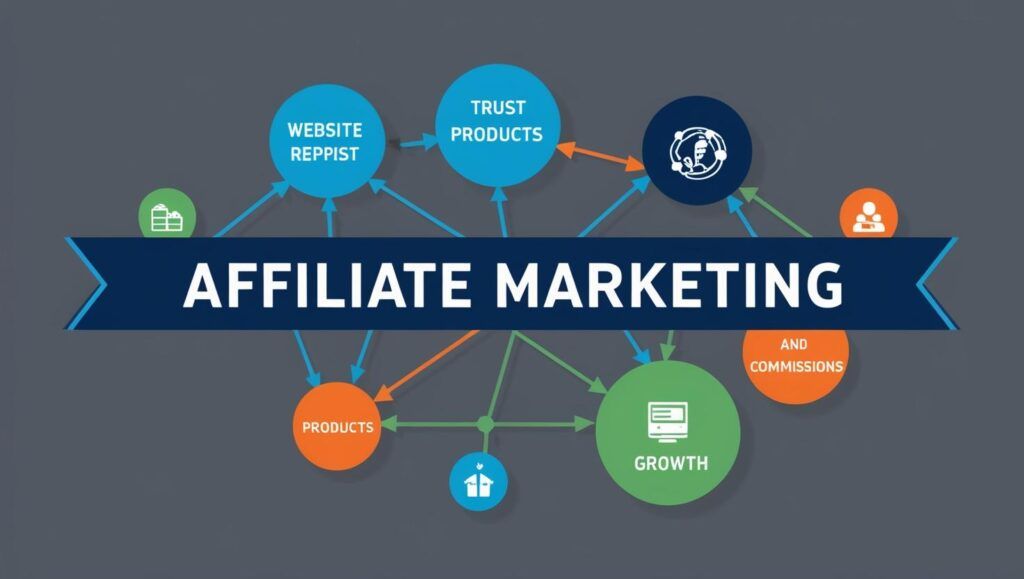
(New to affiliate marketing? We recommend Wealthy Affiliate. Start for free! Read our review here)
Affiliate marketing has really taken off in the digital world. It’s a marketing model that rewards affiliates for driving traffic or sales to a business through their marketing efforts. Think of it as a commission-based gig on steroids—more reach, more scalability, and, when done right, more cash in your pocket.
To truly make money with affiliate marketing, keeping an eye on the numbers is crucial. There are a couple of key metrics you definitely want to track. These include clicks, which tell you how often your links are getting hit, and conversions, which show how many of those clicks lead to an actual sale or desired action. Then there’s revenue, of course. These metrics give a pretty good picture of what’s working and what isn’t.
With all these figures flying around, having the right tools to help manage and interpret data becomes super important. Using tracking software can bridge the gap between insight and overwhelm, allowing you to focus on refining strategies rather than getting lost in spreadsheets. Tools like Google Analytics, Voluum, or ClickMeter can make a huge difference in understanding your campaigns.
However, tracking isn’t without its hurdles. Ad-blockers can hide data, cookies might not track as expected, and sometimes your numbers just won’t add up. Understanding these obstacles upfront makes it easier to navigate them. Meeting these challenges head-on can uncover opportunities to optimize and refine your strategies, making your campaigns stronger and more effective over time.
Setting Up Tracking Systems for Maximum Accuracy
Choosing the right tracking tools is critical for affiliate marketing success. The market offers a bunch of tools, each with its pros and cons. Picking the right one depends on your specific needs. For instance, if you require detailed data and custom reports, you might lean towards something more robust like Voluum or ClickMeter. On the other hand, for general tracking, Google Analytics might just do the trick without too much complexity.
Once you’ve picked your tool, integrating it into your marketing setup is the next step. This can include configuring links, setting up tracking codes, or syncing your data with other platforms. Each tool typically provides a step-by-step setup guide to follow which makes installing it straightforward. It’s crucial to double-check that everything’s wired up correctly to ensure your tracking is on point.
Accurate data collection is a must, but slip-ups can happen. Common errors include misconfigured links, incorrect tracking codes, or even system glitches. Being on the lookout for these issues is half the battle, and maintaining a regular check-in schedule can catch potential problems before they mess with your data.
Hearing how others have set up their systems offers invaluable insights. For example, those in the e-commerce sector might use specific tools tailored to track shopping behaviors, while tech bloggers might prefer tools that measure reading time or scroll depth. Tailoring your system to your niche is key. Understanding these nuances can help streamline your process and avoid wasted effort.
Interpreting and Analyzing Affiliate Marketing Data
Once your tracking system is humming along, interpreting the data it collects becomes your new priority. At its core, analyzing metrics like clicks, conversions, and revenue will help paint a clear picture of your campaign’s performance. But don’t stop there. Investigating deeper into user behavior data—such as bounce rates and average session duration—adds layers to your insights.
Spotting trends within your metrics allows you to finetune your strategy. For instance, perhaps you’ve noticed certain times of the day show a spike in conversions or maybe a specific product category is driving more interest. These patterns aren’t just statistics—they’re clues to what resonates with your audience.
A/B testing is a crucial tool when refining your campaigns. By experimenting with different elements—think headlines, calls-to-action, or even imagery—you can gather concrete evidence about what pulls in the audience and what doesn’t. Don’t be afraid to test frequently and iteratively; it’s a slow grind but pays off with sharpened strategies.
The real magic happens when you turn numbers into action. Rather than getting bogged down in data for data’s sake, use those insights to tweak your messaging, optimize landing pages, or adjust promotions. Making informed decisions on what works and what doesn’t transforms raw data into profit-worthy insights.
Continuously Improving Your Affiliate Marketing Success
Setting clear goals is a game-changer. These goals, rooted in real data and key performance indicators (KPIs), provide clarity and direction. They steer decisions, helping you focus on what will genuinely move the needle — whether it’s optimizing conversion rates or ramping up promotional efforts.
Successful campaigns deserve to be scaled up. But scaling isn’t just about pouring more money in. It’s identifying elements that work well at smaller scales and strategizing how to amplify them without diluting their effectiveness. At the same time, don’t ignore campaigns that didn’t work. Instead, evaluate them, extract lessons, and iterate improvements that prevent similar mistakes.
Staying ahead in affiliate marketing means constantly learning and adapting. Trends shift rapidly, and strategies that work today might need refinement tomorrow. Regularly updating your knowledge through webinars, workshops, or industry news is pivotal. Learning from peers and even competitors can provide fresh perspectives and inspire innovative approaches.
Networking with other industry professionals is invaluable. Engaging with communities, both online and offline, facilitates the exchange of ideas and best practices. This not only keeps your strategies relevant but also encourages a supportive environment where questions and insights can be shared freely. Embracing these opportunities helps you remain adaptable and informed in this fast-paced industry.
Join our mailing list


